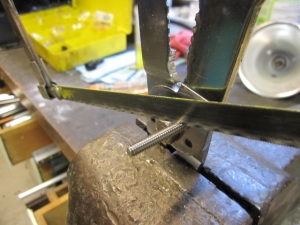By Reid Kowallis

It seems like I never have the right length of machine screws. If the screws on hand are too short, it means a trip to the hardware store where I can usually only find screws that are too long, so I need to shorten them.
If the screws are smaller than No. 8, and made from soft material (soft steel, brass, aluminum alloy, etc.), I use my cheap, all-purpose electrician’s pliers to cut the screw and restore the first thread. But, if the screw is hardened or larger than No. 8, I can’t squeeze hard enough to cut it because of arthritis. So, I spend some quality time fiddling with my vise, hacksaw, and file. It’s hard for me to hold the screw without marring the head/threads in order to file the end square after the screw is cut, especially if it’s short.

Other readers have suggested using split nuts to hold the screw in the vise. I have made several of these split nuts in the past and promptly lost most of the common sizes at least once. Also, I found that the nut usually slips in the vise unless I tighten it to the point that the nut gets badly distorted.
Now, I use my pliers to hold the screw, my vise to hold the pliers, my hacksaw to cut the screw, and a file to square the end. This technique really takes a load of my old, sore hands, and all the common sizes are now on one, difficult-to-lose tool. Note the direction of cut while sawing. This tightens the screw in the pliers. After filing, the screw is backed out and the first thread is restored automatically. This technique is fast and it works great!

